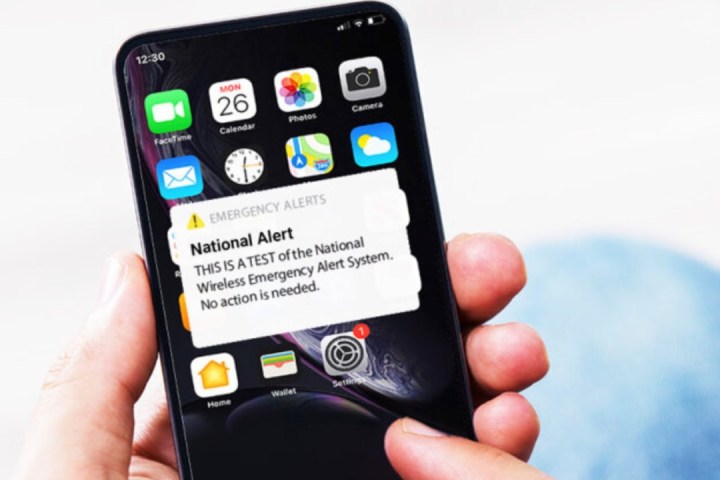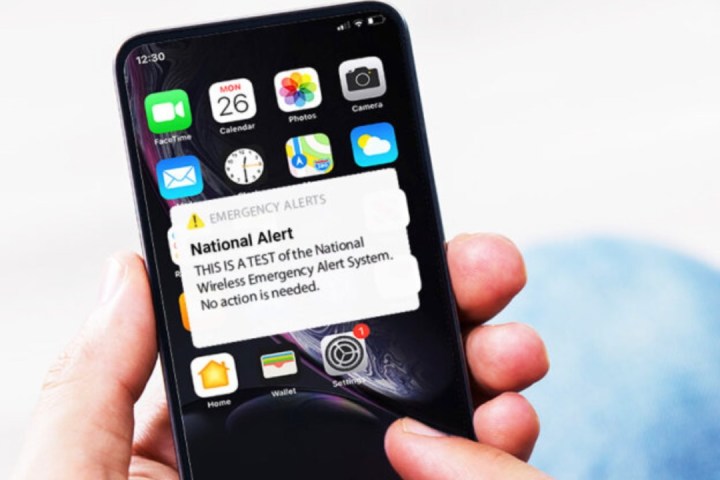
The Federal Emergency Management Agency (FEMA) and the Federal Communications Commission (FCC) will conduct a nationwide emergency alert test tomorrow, Wednesday, October 4. The test will involve two types of alerts: wireless emergency alerts (WEA) and the emergency alert system (EAS).
According to a government release, it will take place at approximately 2:20 p.m. EDT.
The WEA portion of the test will involve all consumer cell phones in the U.S., including the all-new Apple iPhone 15 series, the Samsung Galaxy Z Flip 5, and basically any phone made in the past decade. At the specified time, consumers will receive a text message in either English or Spanish, depending on the language settings on their cell phones. This is the third WEA test to be conducted in the U.S., and it aims to evaluate the system’s effectiveness in delivering critical messages to the public in times of emergency.
The EAS test involves sending voice messages to radios and televisions and is the seventh national test overall. The test seeks to evaluate the reliability and effectiveness of the system in transmitting urgent alerts to the public through various media.
FEMA and the FCC have been working together with EAS participants, emergency managers, and other folks to make sure these tests go smoothly. The goal is to improve our emergency response and preparedness capabilities so that we can give people accurate and timely information during a crisis.
Why will my phone get an emergency alert?

Officials are conducting tests to ensure that both systems work seamlessly nationally during emergencies. The tests will be carried out using FEMA’s Integrated Public Alert and Warning System (IPAWS), an internet-based system that allows authorities to send authenticated emergency messages to the public via various means, including cell phones.
During the test, the Wireless Emergency Alert (WEA) system will send a text message to cell phones. In contrast, the Emergency Alert System (EAS) will send a verbal message to supported devices through the IPAWS-OPEN platform.
The WEA test will last approximately 30 minutes and send one message to anyone with a WEA-compatible wireless phone. To receive the message, your phone must be turned on and within the range of an active cell tower.
Consumers will receive this message: “THIS IS A TEST of the National Wireless Emergency Alert System. No action is needed.” Spanish phone users will see this message: “ESTA ES UNA PRUEBA del Sistema Nacional de Alerta de Emergencia. No se necesita acción.”
The EAS test will last about 60 seconds. During this time, supported devices will transmit a voice message: “This is a nationwide test of the Emergency Alert System, issued by the Federal Emergency Management Agency, covering the United States from 14:20 to 14:50 hours ET. This is only a test. No action is required by the public.”
What time will I get the emergency alert on my phone?

- Eastern Daylight Time (EDT), 2:20 p.m.
- Central Daylight Time (CDT), 1:20 p.m.
- Mountain Daylight Time (MDT), 12:20 p.m.
- Pacific Daylight Time (PDT), 11:20 a.m.
- Alaska Daylight Time (AKDT), 10:20 a.m.
- Hawaii-Aleutian Standard Time (HAST), 8:20 a.m.
In the event of severe weather or other factors, the test will be rescheduled for October 11.
Editors’ Recommendations
Services Marketplace – Listings, Bookings & Reviews
